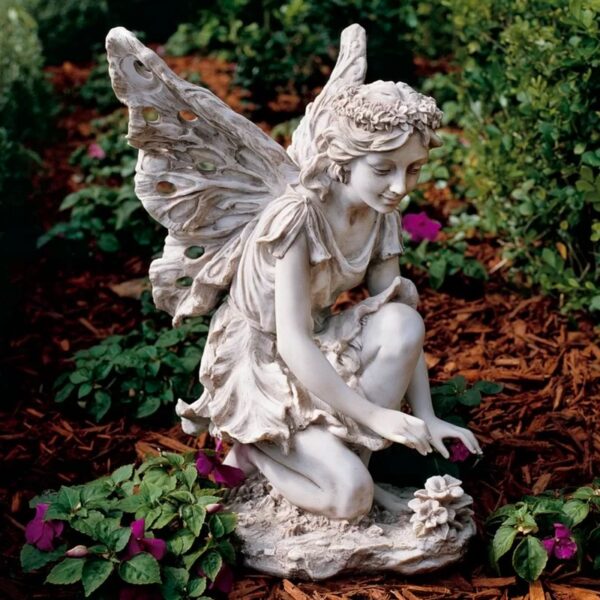Garden decoration statues are more than just ornaments; they breathe life into your outdoor space, adding character and charm. Drawing from my personal experience and research in garden aesthetics, this comprehensive guide will help you choose the perfect statues to enhance your garden.
Why Garden Decoration Statues Matter
Garden statues serve various purposes: decorating the space, creating focal points, or even embodying personal beliefs and values. They can provide a sense of harmony and peace, making your garden a true sanctuary. Let’s delve deeper into the significance of using statues in your garden design.
Types of Garden Decoration Statues
The market is inundated with various types of garden statues, each with its unique charm and purpose. Below are some popular categories:
1. Animal Statues
Animal statues often symbolize traits associated with the specific creature. For instance, a lion represents strength, while a dove symbolizes peace.
2. Mythical Creatures
These enchanting figures can add a touch of fantasy to your garden. Consider dragons, fairies, or unicorns to spark imagination.
3. Religious Statues
Many gardeners choose religious statues that reflect their beliefs, such as angels or Buddha figures, to cultivate a serene atmosphere.
4. Human Figures
Human statues, whether modern or classical in design, can create a narrative in your space. They often evoke emotion or represent ideals.
5. Abstract Statues
Abstract sculptures can be striking focal points, drawing attention with their unique forms and materials.
Materials Used in Garden Statues
The material of your garden statue can greatly influence its durability and appearance. Here are some common materials:
| Material | Durability | Maintenance | Pros | Cons |
|---|---|---|---|---|
| Concrete | Very Durable | Low | Weather-resistant, heavy | Can crack in extreme cold |
| Wood | Moderate | High | Eco-friendly, natural look | Susceptible to rot |
| Metal | Durable | Moderate | Rust-resistant options available | Can rust, heavy |
| Resin | Moderate | Low | Lightweight, versatile designs | May fade over time |
| Stone | Very Durable | Low | Timeless appeal | Expensive, heavy |
Choosing the Right Garden Statues
Choosing the perfect garden statue involves careful consideration of various factors. Below are key points to help you make the right decision:
1. Size Matters
Assess the scale of your garden. A small statue can get lost in a large landscape, while a large statue can overwhelm a petite garden.
2. Color Coordination
Ensure that the colors of the statue harmonize with your garden’s scheme. A vibrant statue can act as a stunning focal point if placed correctly.
3. Style Harmony
Your statue should reflect the style of your garden—be it contemporary, rustic, traditional, or eclectic.
4. Personal Connection
Choose statues that resonate with you on a personal level. It could be an embodiment of your passion or a representation of your hopes.
Placement Tips for Garden Statues
Where you place your garden statue can drastically impact its effectiveness and aesthetic appeal. Here are some wonderful tips:
1. Create Focal Points
Position statues where they can draw attention, such as at the end of a pathway or near seating areas.
2. Use Height Variation
Utilize various elevations in your garden. Place taller statues at the back and shorter ones in the front to create depth.
3. Enhance Natural Features
Use statues to complement existing natural elements, such as a pond or flower bed, to create a cohesive look.

Maintaining Your Garden Statues
Proper maintenance is essential to ensure your garden statues remain beautiful for years to come. Here’s how to care for various materials:
Concrete and Stone Statues
Clean with a damp cloth and mild soap. Remove algae or mildew with a soft brush and water.
Wooden Statues
Apply wood preservative periodically. Clean with a soft cloth to avoid scratches.
Metal Statues
Check for rust and treat it immediately. Regular cleaning helps maintain shine.
Resin Statues
Wash with soap and water. Avoid extreme temperatures to prevent fading or warping.
Pros and Cons of Using Garden Statues
Every good garden idea comes with its set of advantages and disadvantages. Here’s a look at the pros and cons of incorporating statues into your garden:
Pros
- Enhances visual interest
- Creates focal points
- Expresses personal style
- Encourages creativity in design
Cons
- Can be expensive
- Requires maintenance
- May not fit every garden style
- Potential for weather-related damage

Inspiration: Personal Experience with Garden Statues
Let me share a personal anecdote about my experience with garden statues. When I first moved into my home, the garden was barren and uninviting. I decided to invest in a few statues—a serene Buddha and a couple of whimsical garden gnomes. As soon as I placed them strategically, the energy of the garden changed entirely; there was a newfound sense of tranquility and joy. Friends frequently comment on how lovely and inviting my garden feels, thanks to those simple yet profound additions.
FAQs about Garden Decoration Statues
1. What is the best material for garden statues?
The best material depends on your climate, aesthetic preference, and budget. For colder climates, concrete and stone are durable, while resin is lightweight and affordable.

2. How do I prevent my garden statues from being damaged?
Regular maintenance, choosing the right material for your climate, and placing statues in sheltered areas can help prevent damage.
3. Are there specific statues that are recommended for smaller gardens?
For smaller spaces, opt for petite statues or abstract designs that won’t overwhelm the area. Elevated displays can also help maximize space.

4. Can garden statues attract pests?
Statues themselves typically do not attract pests; however, standing water around them can lead to pest issues. Always ensure proper drainage in your garden.
5. How do I clean my garden statues?
Cleaning methods depend on the material. Generally, soap and water suffice; avoid harsh chemicals that could damage the finish.
